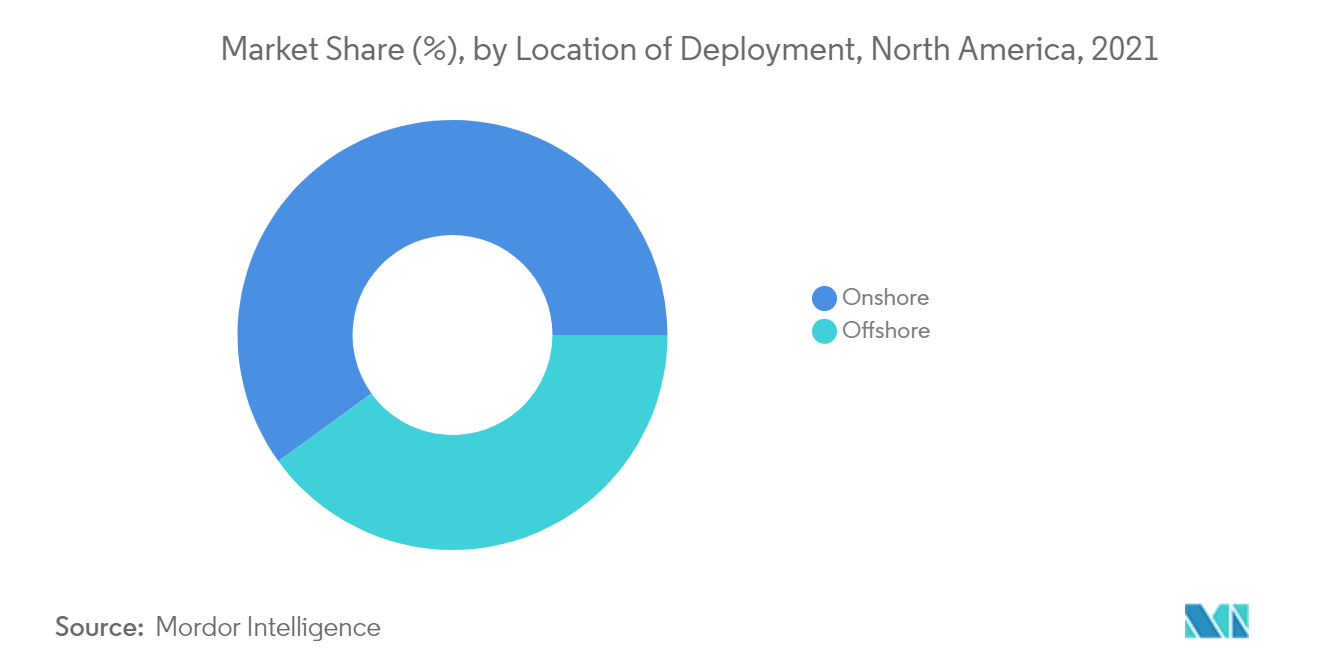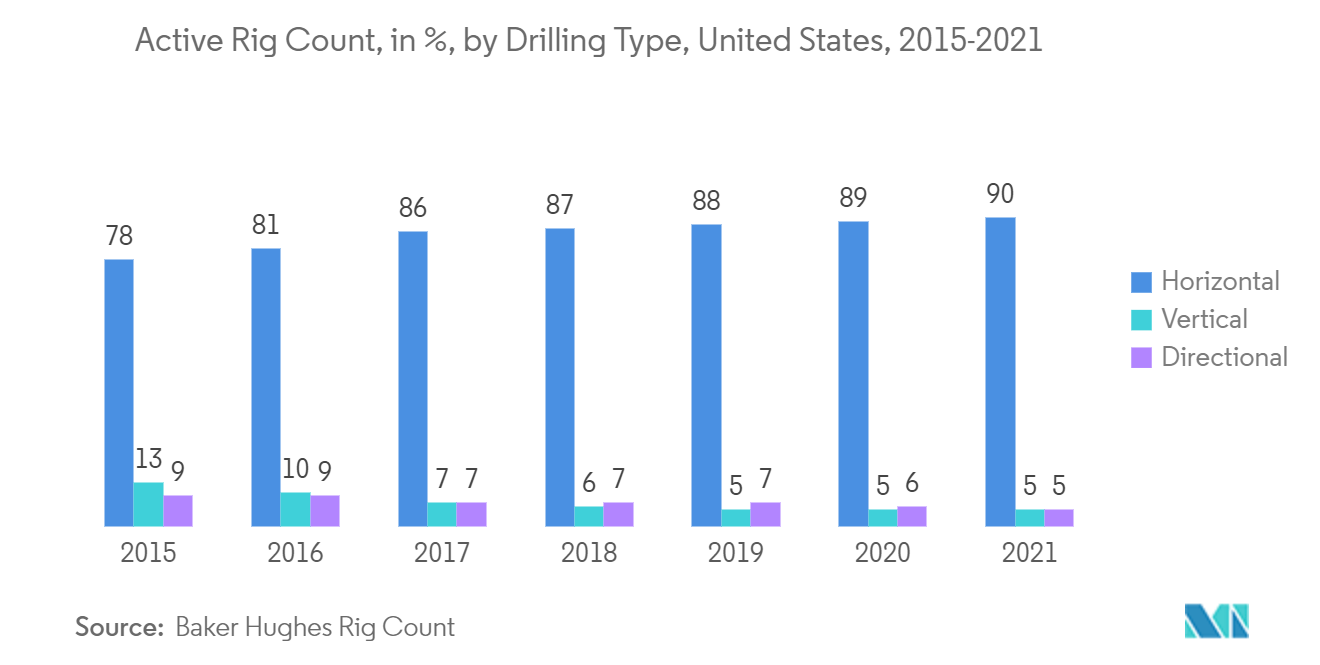Market Trends of North America Directional Drilling Services Industry
This section covers the major market trends shaping the North America Directional Drilling Services Market according to our research experts:
Offshore Segment Expected to Witness Significant Demand
- Directional drilling services are significantly used in the offshore sector, because majority of the wells in the offshore sector are drilled from a single drilling rig in order to save costs. Also, the extended reach wells and horizontal wells are usually used to develop the offshore oil and gas fields, mainly due to the required number of platforms can be reduced. The demand for directional drilling services in the offshore sector are expected to witness significant growth during the forecast period, mainly driven by increasing investments in the sector and upcoming exploration and production activities in the offshore segment.
- As of 2021, the offshore oil and gas industry accounted for about 15.2% of the United States' crude oil production. The Gulf of Mexico is the major offshore oil and gas producing region in North America.
- The offshore oil and gas drilling sector had been subdued in the past few years, mainly due to the crude oil price being lower than the breakeven price of several offshore oil and gas fields. As a result, the demand for directional drilling has been negatively impacted.
- The brent crude oil prices started showing signs of improvement after mid-2016 and remained well above USD 60 per barrel throughout 2018 (except December 2018). This, coupled with the cost reduction program of upstream oil and gas companies, resulted in gaining the confidence of investors for final investment decisions for projects, which got canceled during the low commodity price environment.
- With the rising number of maturing onshore oilfields in the recent years, there has been growth in the offshore exploration and production (E&P) activities. The Permian Basin of United States is the most important basin in terms of crude oil production in the country, although the production from old wells has started to decline, and there is little scope for new discovery in these areas. As a result, the oil and gas industry is shifting toward deeper regions in search of oil and gas, in order to meet the increasing demand.
- Therefore, based on the above-mentioned factors, offshore segment is expected to witness a significant growth in the North America directional drilling services market during the forecast period.

United States to Dominate the Market
- The United States, as of 2021, was the largest producer of oil and gas across the globe. In the United States, there are more than 900,000 active oil and gas wells, and more than 130,000 have been drilled since 2010. The United States has one of the largest technically-recoverable shale gas reserves, and the second-largest tight oil reserves in the world. The technological development in the hydraulic fracturing and low breakeven prices have supported the oil and gas directional drilling activities in the region.
- According to the United States Geological Survey (USGS), over 46 billion barrels of oil, 280 trillion cubic feet of gas, and 20 billion barrels of natural gas liquids are trapped in the low-permeability shale formations of the United States, as of 2021. To fulfil the increasing demand for oil and gas, these fields are likely to be explored and produced.
- The oil and gas companies in the country have successfully deployed their technologies, also to exploit the shale reserves in the country and achieve the ambitious goal of becoming a net exporter of energy in the coming years. Each unconventional well, on an average, is being drilled with longer lateral well sections, or laterals, and more hydraulic fracturing stages per lateral length.
- Modern hydraulic fracturing, combined with horizontal drilling, allows multiple wells to be drilled from a single spot. This practice not only increases the drainage area significantly but also reduces the required surface drilling area above, by as much as 90%, in turn, reducing the cost of drilling per barrel of oil produced.
- The combination of horizontal drilling and hydraulic fracturing increased the production of crude oil, lease condensate, and natural gas in the country over the past few years. Hydraulically fractured horizontal wells have accounted for most of all the new wells drilled and completed across the country.
- Advancements in hydraulic fracturing and horizontal completions have made shale gas wells more profitable. Shale gas is estimated to account for about 46% of the total natural gas supply in the United States, by 2035. Horizontal drilling is often used for shale gas reserves, with lateral lengths up to 20,000 feet within the shale. Thus, the increasing demand for unconventional reserves, such as shale plays and tight oil, is expected to boost the demand for directional drilling, during the forecast period.
- Therefore, based on the above-mentioned factors, United States is exoected to dominate the North America directional drilling services market during the forecast period.


